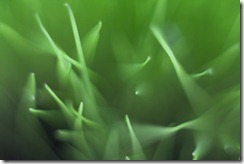Contents tagged with CMS
-
Creating a DecentCMS content type
A content item in DecentCMS is an aggregate of parts, as defined by the content type of the item. For example, an item of type “page” is the combination of a title part, and a body part. This definition of which parts constitute a given type is configuration data that is defined at the level of the site.
-
Creating a new DecentCMS content item
Currently, DecentCMS stores content items in the file system, which is just fine for small sites, and makes editing and deploying them quite easy, even though there is no admin dashboard yet. Creating a content item is done by simply creating a file in one of the supported formats: JSON, YAML, and Snippable YAML + Markdown.
-
What’s in a DecentCMS site’s folder?
The default mechanism to store content items in Decent CMS is to use files under the /sites directory. This can be replaced with database storage, of course (the first provider I’ll implement after the file-based one will be CouchDB), but the file storage has some unique advantages. While it’s obviously not something you’d use on a big site, being able to xcopy contents, and deploy contents with a simple ftp client is very powerful. Being able to look into folders and find content items as single files that can be modified with a simple text editor is extremely comfortable.
-
Oops! I did it again: introducing DecentCMS
There are a few things that nobody should ever do. One of these things is to write a new CMS. So about four months ago, I decided to write a new CMS using Node.js. It’s called DecentCMS, and I’ve had insane amounts of fun building it so far.
-
The CMS ecosystem and Microsoft
CMS is extremely important strategically for any web company. About 35% of web sites use a CMS, and the top ones are all PHP (WordPress on its own is more than 20% of all web sites). In other words, if you care about the market share of your web platform, you need a good CMS running on it.
-
The Shift: how Orchard painlessly shifted to document storage, and how it’ll affect you
 We’ve known it all along. The storage for Orchard content items would be much more efficient using a document database than a relational one. Orchard content items are composed of parts that serialize naturally into infoset kinds of documents. Storing them as relational data like we’ve done so far was unnatural and requires the data for a single item to span multiple tables, related through 1-1 relationships. This means lots of joins in queries, and a great potential for Select N+1 problems.
We’ve known it all along. The storage for Orchard content items would be much more efficient using a document database than a relational one. Orchard content items are composed of parts that serialize naturally into infoset kinds of documents. Storing them as relational data like we’ve done so far was unnatural and requires the data for a single item to span multiple tables, related through 1-1 relationships. This means lots of joins in queries, and a great potential for Select N+1 problems. -
Adding RSS to tags in Orchard
 A year ago, I wrote a scary post about RSS in Orchard. RSS was one of the first features we implemented in our CMS, and it has stood the test of time rather well, but the post was explaining things at a level that was probably too abstract whereas my readers were expecting something a little more practical.
A year ago, I wrote a scary post about RSS in Orchard. RSS was one of the first features we implemented in our CMS, and it has stood the test of time rather well, but the post was explaining things at a level that was probably too abstract whereas my readers were expecting something a little more practical. -
Deploying an Orchard site using WebMatrix
In this screencast, I'm publishing an Orchard web site and its SQL Express database to a shared host using WebMatrix.
-
Migrating an Orchard site from SqlCe to Sql Express using WebMatrix
In this short video, I show how to use WebMatrix to migrate an Orchard site from using the file-based SqlCe to a SQL Express database.
-
A quick look at what’s new in Orchard 0.8
 We shipped Orchard 0.8 on Monday and it’s the last release we will make before 1.0, which is scheduled for January 2011. We think it’s a pretty nice release in that it wraps up the UI story for the platform.
We shipped Orchard 0.8 on Monday and it’s the last release we will make before 1.0, which is scheduled for January 2011. We think it’s a pretty nice release in that it wraps up the UI story for the platform.